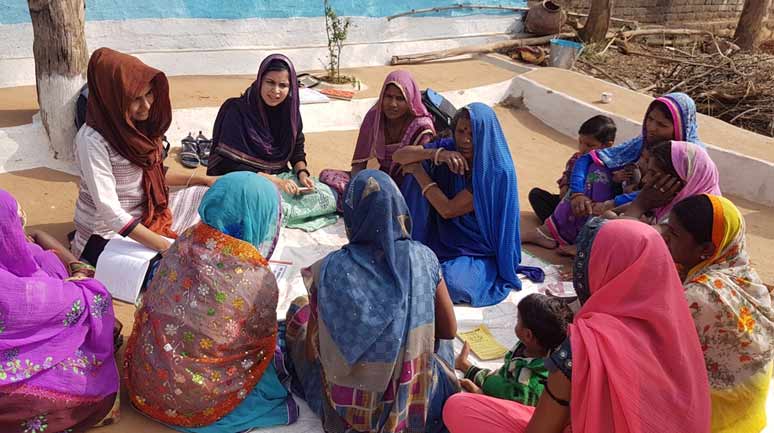
Qualitative study on Sustainability of SHGs

Introduction and Background
National Rural Livelihoods Mission (NRLM) was launched by the Ministry of Rural Development (MoRD), Government of India in June 2011. The Mission aims at creating efficient and effective institutional platforms of the rural poor, in the form of Self-Help Groups (SHG), enabling them to increase household income through sustainable livelihood enhancements and improved access to financial services.
National Rural Livelihoods Mission (NRLM) SHGs and federations are complex institutions at the nexus of state, federation, community and household. A core mandate of an NRLM-federated SHG is to increase women’s welfare and agency. This is supposed to happen by forming state-backed, collective deliberation bodies with a vertical structure (SHGs, VOs, CLFs) plus horizontal linkages to the state and other community and private organizations at each level.
An overall NRLM baseline survey found a wide range of functioning of the SHGs. In addition to the quantitative results, it was important for NRLM to understand the drivers of SHG performance. The current study undertakes an in-depth qualitative inquiry to provide a complementary understanding to the factors for success and failure of collectives.Research Questions
Success and failure of SHGs must be understood in relation to how they are embedded in these their socio-political spaces. Moreover, to understand failure, we need to understand success. Following are some of the questions that the research will seek to answer:
- What factors are responsible for the success and failure of SHGs to sustain?
- At the institutional level, what role do SHG federations play in determining SHG functioning and sustainability? What are the strengths of well-performing SHG federations?
- How is the SHG embedded in local community, interactions with panchayats, banks and bureaucrats? What are the two-way influences between SHG dynamics and broader social and state environment? When can this become a source of positive development dynamics?
Methodology and methods:
We apply a systems thinking approach to study the SHG as a system. Moreover, we draw on theories of the interaction between group dynamics and institutional design and collective identity salience within groups.
The core of the qualitative research strategy involves a mixture of open-ended exploration of organization history, and semi-structured assessment in relation to broad hypotheses. The main research technique is interviews of a purposively chosen set of individuals associated with the three main organizational forms—SHGs, VOs and CLFs—complemented by focus group discussions and review of text materials.
Project status:
The three-month project has recently completed data collection and is at the stage of data transcription and pre-analysis

